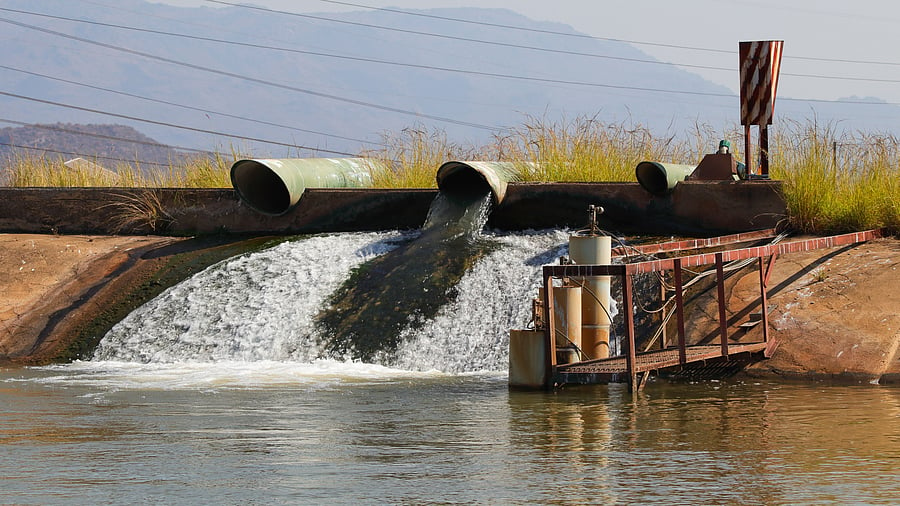
Nationally, the current storage is 117.6 per cent of last year’s levels and 115.9 per cent of the normal, a sign of overall improvement. However, this aggregated progress masks stark regional imbalances.
(Representative image)
Credit: iStock Photo
New Delhi: Even as India’s overall water storage in major reservoirs has improved significantly over last year, several states are struggling with critically low levels, according to the bulletin issued on Friday.
The country’s 161 major reservoirs currently hold 57.974 billion cubic meters (BCM) of live storage, accounting for 31.78 per cent of their total capacity, according to the weekly bulletin issued by the Central Water Commission (CWC).
This marks an increase from the 49.290 BCM recorded during the same period last year and exceeds the ten-year average of 50.038 BCM.
Nationally, the current storage is 117.6 per cent of last year’s levels and 115.9 per cent of the normal, a sign of overall improvement. However, this aggregated progress masks stark regional imbalances.
The eastern region, covering states like Bihar, Odisha, Jharkhand and West Bengal, is facing a sharp water shortage. The region's reservoirs are filled to just 27.87 per cent of their capacity, well below last year’s 35.97 per cent and the normal 34.64 per cent.
Critically low storage was reported in Odisha’s Rengali and Upper Indravati reservoirs, Bihar’s Badua and Chandan dams, and Mizoram’s Tuirial reservoir, which is functioning at just 23.4 per cent of its normal storage.
The situation is grimmer in the northern region, where states such as Himachal Pradesh, Punjab and Rajasthan collectively recorded only 24.09 per cent of reservoir capacity compared to 29.5 per cent last year.
Himachal Pradesh’s Pong Dam and Punjab’s Thein Dam have reported substantial deficits.
Storage in the Pong Dam is down to 40.22 per cent of normal and Gobind Sagar is operating at only 20.44 per cent of its full capacity.
The live storage in the Indus basin stands at just 2.831 BCM — only 19.1 per cent of its capacity of 14.819 BCM — representing a massive 40 per cent shortfall from the average.
This shortfall is particularly alarming given that the Indus system supports large parts of Jammu and Kashmir, Punjab and Himachal Pradesh through irrigation, drinking water and hydropower generation.
The western region, comprising Maharashtra, Gujarat and Goa, fared relatively better. With 34.7 per cent storage, it exceeded both last year’s figure (28.15 per cent) and the normal (27 per cent). Gujarat showed a particularly positive trend, with some reservoirs reporting more than 50 per cent of normal storage.
The reservoirs reached 37.8 per cent of their full capacity in central India, which includes Madhya Pradesh, Uttar Pradesh, Chhattisgarh and Uttarakhand.
This is up from 34.5 per cent last year and well above the ten-year average of 30 per cent. Uttar Pradesh and Madhya Pradesh saw sharp gains, with key reservoirs like Gandhi Sagar, Indira Sagar and Bansagar performing significantly better than in previous years.
The southern region, with the highest number of monitored reservoirs (45), recorded 28.79 per cent storage — an improvement over last year’s 15.19 per cent and above the normal of 20.58 per cent.
Tamil Nadu stood out with an exceptional rise in storage levels, up by over 91 per cent compared to the ten-year average. Andhra Pradesh’s Nagarjuna Sagar reservoir, however, remains in distress, holding only 31.3 per cent of its normal storage.
Telangana’s Priyadarshini Jurala and Uttar Pradesh’s Rangawan reservoirs have reported zero storage.
Despite the improved national average, 41 reservoirs across the country have storage less than 80 per cent of their normal levels and 17 of these are operating at 50 per cent or less.
These include major reservoirs like Pong Dam, Machchhu II (Gujarat), Bhima Ujjaini (Maharashtra) and Sholayar (Tamil Nadu).
Alarmingly, five reservoirs, including Priyadarshini Jurala in Telangana and Rangawan in Uttar Pradesh, have reported no water at all.
While rainfall and snowmelt have helped improve water levels in many parts of India, especially in central and western regions, the eastern and northern belts remain vulnerable ahead of the peak summer months.
The Central Water Commission has flagged the need for close monitoring and region-specific water management strategies to mitigate risks to agriculture, drinking water supply and hydropower output.
The CWC noted that of the 20 hydroelectric reservoirs it monitors, storage was normal or better in only 12.